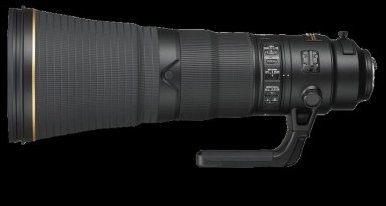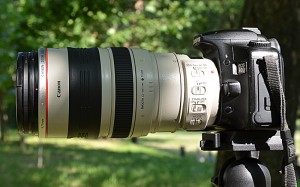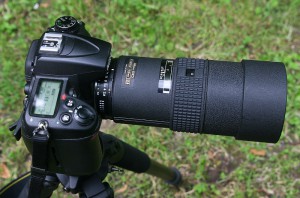Lens reviews
Lens reviews
 You can find Canon and Nikon lens reviews below on this page. You can find prime and zoom lenses as well. Full frame and Aps-C lenses included, sometimes discontinued models as well. Most reviews are about really good lenses which is worth to look at. Newest lensesThe newest lenses are the Canon 100-400 II, Canon 400mm f/4 Do II, Canon 11-24mm f/4, Canon 24mm f/2.8 is, Canon 24-105 f/4-5.6, Nikon 20mm 1.8 , Sigma 24mm 1.4 Art lenses. Pentax recently will release two new telephoto lenses, the Pentax 150-450mm f/4-5.6 lens, and the Pentax 70-200mm f/2.8 lenses. The Sony is also release 4 new lenses for “E” mount cameras: the Sony FE 90mm f/2.8 Macro, the Sony FE 24-240mm f/3.5-6.3, the Sony 28mm FE f/2 and Sony Distagon FE 35mm f/1.4 ZA. The FE sign shows these lenses are Full frame compatible lenses.The Tokina 24-70mm f/2.8 lens is also coming. Newest lens reviewsThe newest lens reviews are the Sigma 500mm f4.5 , the Tamron 180mm Macro , Sigma 50mm 1.4 Art , Sigma 100-300 f/4, Nikon 300mm f/4 , Canon 70-200mm f/2.8 II lens reviews. |
Nikon Dslr vs Canon Dslr
Canon lenses A-Z The ever growing
database contains almost any lenses
available for Canon EF mount.
Canon Dslr Lens reviewsCanon Aps-C lens reviewsBest value Canon lenses Here we can read about some Zoom lens reviewsCanon 10-22 review Prime lens reviewsSamyang 8mm f3.5 review Tokina 300mm f/2.8 ATX PRO SD II review Canon 400mm f5.6 review The Sigma 400mm f/5.6 telemacro is an TeleconvertersKenko 1.4 dgx review Canon Full frame Dslr lens reviewsComing soon. |
Lens ratings
Nikon lenses A-Z The ever growing
database contains almost any lenses
available for Nikon F mount.
Nikon Dslr Lens reviewsNikon Aps-C lens reviewsZoom lens reviewsNikon 14-24mm f/2.8 review Prime lens reviewsNikon 35mm f/1.8 review |
Other coming or new lenses
Sigma 24mm 1.4 Art lens is a new lens in the popular bright art series.
Tamron 15-30mm f/2.8
An interesting new bright wide
angle from Tamron.
Sigma 18-300mm
A new superzoom from Sigma
Canon 100-400 II
Compact size, turn-type zoom, 2200 USD.
On fluorite, and one super ED elements.
Canon 24mm f/2.8 is
A new pancake lens for Aps-C.
Canon 400mm f/4 DO II
Updated diffractive optics.
Canon 24-105 f/4-5.6 STM
Af-s Nikkor 400mm f/2.8E FL ED VR
A New 400mm f/2.8 Nikon with
flourite element.
Nikon 20mm f/1.8
A newest bright wide angle.
Canon 16-35mm f/4 is USM lens
A new wide angle.
Canon Ef-S 10-18mm (Aps-C)
An affordable UWA for Aps-C
Nikon AF-S Teleconverter TC-14E III
The III rd version of the 1.4x TC.
Competible with few lenses according
to official documentation.
Tokina 70-200mm f/4
A new lens from Tokina first for Nikon.
Stabilizer and ultrasonic motor
in the new Tokina lens.
Olympus 300 f/4 prime
A new coming lens for Micro 4/3.
Samyang 12mm f/2
A new interesting Samyang wide angle.
Tamron 16-300mm
Zeiss Touit 50mm f/2.8 macro
Nikon 35mm f/1.8G ED
Ebay links
Lens comparisons
Latest Dslr lens reviews:
Canon 70-200mm f/2.8 II, Canon 10-22, Canon 100-400, Nikon 180mm, Canon 28-300 L, Canon 20mm f/2.8, Tamron 150-600, Tokina 16-28mm FF, Canon 70-300 is, Canon 28 2.8 is, Canon 17-55 is, Sigma 120-300 f/2.8, Sigma 100-300 f/4, Canon 100mm f/2, Canon 85mm f/1.8.
Explanation of lens specs
The features of the lens
MFD
Minimum focus distance often just abbreviated
with MFD.
Every lens has a minimum focusing distance, which
means if we focus closer the image won’t be
sharp. We can cheat a little in manual focusing.
For example the lens has a MFD of 90cm, we can
switch to manual mode and can make ok images if we
absolutely need to at 85cm distance. We focus to
90cm in manual mode but actually we can go a
little closer. But if we want to focus to say 50cm,
the pics will be fairly unsharp.
Lens elements
There is lens groups/elements in the lens specs,
for example 20 elements / 14 groups. What is
important less lens elements, less contrast loss
normally, this is why prime lenses are better
than zoom lenses, because the prime lens has
simpler design.
Exotic lens elements
What is very important if the lens has some
ED or UD extra low dispersion or Fluorite
lens elements. Lenses with these elements
are simply much better, has less purple
fringing, nicer colors and better contrast.
Autofocus systems
Basically there are two main types of focusing
system used in lenses, the older micromotor
and the better ultrasonic motor. The ultra-
sonic motor (USM) first developed by Canon is
much faster, more precise and silent. All
high end Canon lenses uses ultrasonic
focusing motor, Sigma, Nikon, Tamron and the
other suppliers are also has ultrasonic
systems, Nikon call SWM, Sigma HSM, Sony
SSM and so on,
Canon has a new STm (stepper motor) which is
optimized for video recording, this is truly
silent, even more than an USM motor. And
for transitions important for video is
also better, than the other focusing
motors used for still shooting.
Focus limiter
Focus limiter is mostly used in telephoto
and macro lenses. This means the lens
starts to focus from the limit value, for
example, the lens MFD is 25cm and there is
a limiter at 4m, than the lens won’t focus
distances below 4m, which makes focusing
faster. Usually the slowest speed in
focusing is at close distances.
Focusing speed
What is a good focusing speed ?
High end lenses can run through the whole
focus range in less than a second, or even
less. This is very useful in wildlife sports
or any action photography.
Manual focus override
Older lenses usually with micromotor
focusing rotates during focusing, this
means there is a direct connection
between the lens and the focus motor.
If we grab the lens at the rotating
part, during focusing we stop the
focusing process, so we only focus with
these lenses if we don’t grab the moving
parts. We can damage the lens’s motor this
way as well if we don’t care enough. On
the other hand internal focusing lenses
doesn’t have moving parts, everything
happen inside the lens. The manual focus
override means we can grab the lens any time
even during focusing and can modify the
focusing distance. This doesn’t mean the lens
switches to manual mode when we grab the ring,
if we press the shutter release button it
starts to focusing again and the setting is
gone. For switch to manual we need to switch
the lens by a button or other switching
mechanism (push pull switch on some lenses).
This setting (manual focus override) is good
for example if we focus on a bird in front
of a busy background, we move the focus away
from the background, and the lens can focus
on the next subject.
Rear focusing zoom lenses
Zoom lenses with rear focusing can happen,
that the focal length is less at closer
distances. What does it mean ? Let’s say
we have a 70-200mm lens. Many cases the
manufacturer says the 200mm can be
achieved only for infinity focus. This
means it can happen we make a portrait
from 3m, and we find out the lens is
not 200 but 170 mm long in reality,
which means we have a wider view on
closer distances. For example the
Nikon 70-200mm f/2.8 Vr II has this
kind of behaviour in closer distances.
The f/4 version is not like that.
Stabilizer
Today more and more lenses has a
stabilizer feature. The stabilizer
helps at still images, but for moving
themes like kid, sports, race not really
useful. Canon calls theses lenses is
(image stabilizer), Nikon Vr (vibration
reduction), Sigma OS (optical stabilizer)
Tamron Vc (vibration control and so on.)
The effect is much bigger at telephoto
lenses than for wider lenses. The
manufacturers sometime gives a number like
4-stops stabilizer. This means we can use
4 stops lower shutter speed than in normal
cases. For example as a rule of thumb
500mm lenses needed 1/500s on a FF camera,
on Aps-C 1.5-1.6 times faster meaning 1/750s
or 1/800s. A fours stop stabilizer allows us
to use 1/800 – 1/400 – 1/200 – 1/100 -1/50s
shutter speed. This is a very huge achievement.
Obviously if something moving quickly the
1/50s won’t be enough to freeze it.
Lens reviews
At above links can be find the reviews
of various Canon and Nikon digital
camera lenses for Dslr cameras. I don’t
do currently scientific tests about
resolution, vignetting or chromatic
aberration, but more concentrate on the
lens value in usage: what purpose is it
good for, the price is realistic for
the quality and usage value someone get,
what are the alternatives on the market,
which is perhaps better in some ways,
what are the advantages and disadvantages
of the given product. I make pictures with
each lens and I attach several pictures for
the reviews to really can see what the
lens is good for, at different apertures.
What are the qualities we concentrate
on the reviews ?
There are several factors that are important
for lens testing. Below I list some of them
which is very important to really see a value
of a photographic lens.
Sharpness
Sharpness is an essential quality of a
photographic lens. Although some people say
sentences like, sharpness is not important,
rarely any serious photographer use not
sharp lenses. Say a bird or wildlife
photographer or sports photo reporter
to change their super expensive several
thousand dollar lens to something less
sharp would be an interesting idea. If
I want to shoot a tiny bird from a
distance as a bird photographer, every
fraction of sharpness is definitely
needed to see the details of the small bird.
Brightness
Brightness is also a very simple quality of a lens. Simply bright lenses can make sharper images in low light and in daylight as well. The brightness of the lens has to do with the diameter of the glass used. Bigger glass-usually more light, more detail-better images.
Mechanical quality
If we spent a sum for a lens, we hope we can use it not just several days, or months but extended period of time. For high money we want the lens to be durable, perhaps survive serious abuse, without problem. If the lens is simply falls apart by itself not very wise thing to spent to much money on it.
Focal length
Focal length defines the angle of the lens we can work with. There are ultra wide angle, wide angle, normal, telephoto and super telephoto lenses, depending on the focal length. Focal length is essential to know especially at single focal length lenses.
Ultra wide angle lenses
We call wide angle lenses of focal length of 6-15mm on Aps-C sensor sized cameras, or 6-24mm focal lenght on Full frame cameras.
Wide angle lenses
We call wide angle lenses of focal length of 15-30mm on Aps-C sensor sized cameras, or 24-50mm focal lenght on Full frame cameras.
Normal lenses
We call a normal lens with a focal length of 30mm on Aps-C sensored cameras or 50mm on Full frame cameras.
Telephoto lenses
We call a lens telephoto if the focal lenght of the lens is more than 50mm on Full frame cameras, or more than 30mm on Aps-C sized cameras.
Super telephoto lenses
We call a lens super telephoto if the focal length of the lens is 400mm and longer. Super telephoto lenses are used by wildlife or bird photographers, and sport shooters. The good quality super telephoto lenses are usually the most expensive lenses with excellent sharpness and other optical qualities. The price range of this lenses can be from 1000 dollars to 18000 dollars or even more.
Autofocus operation
If we shoot action, sports or wildlife quick autofocus operation is essential. For landscapes, macro,product photography or wide angle work perhaps not so much.
Zoom lenses
Zoom lenses or vari-focal lenses are a versatile tools for several purposes. There are different types of zoom lenses. There are super zoom lenses with a huge range between wide angle and telephoto, mid range zooms with usually not so long telephoto range, and some zooms which only in telephoto or wide angle, or ultra wide angle range.
Prime lenses
Prime lenses or single-focal lenses are specialized lenses for a purpose. Mostly used for telephoto or macro work, where the possible highest optical quality needed. Prime lenses are more simple than zoom lenses, usually has better brightness and sharpness but not so versatile. There are wide angle and long telephoto primes as well.
Teleconverters
Teleconverters are relatively smaller optical elements or lenses which used to give a lens a more magnification. There are 1.4x,1.7x, 2x, and 3x converters. The number shows the increase in focal length you get. The converters typically works best with prime lenses of 135mm focal length or longer. At the same time the lens going to get longer and darker. The 1.4 converters “robs” 1 stops of light, 2x converters 2 stops of light.
Lens reviews – Most popular Canon lenses
Most popular Canon lenses are the 50mm lenses, the 18-55is, 15-85is, 17-55is, the 70-200 L zoom lenses, the 35mm f1.4, the 100mm macro, the 85mm f1.8 portrait lens, the Canon 24 105 L, the 400mm f5.6 super telephoto, the 300mm f2.8 L, the 500mm f4 L.
Lens reviews – Most popular Nikon lenses
Most popular Nikon lenses are the 35mm f/1.8 G, the 50mm f/1.8G, the 70-200mm lenses, the 85mm f/1.8G, the 24mm f/1.4, the 16-85mm and 18-105mm, the Nikkor 14-24 f/2.8G which is a fantastic lens. The 105mm vr macro, the 17-55mm f/2.8, the 24-70mm f/2.8 are also popular.
Distance scale
Most quality lenses has a distance
scale. For cheaper lenses this is often
omitted. The scale shows where are the
different focusing distances, usually 3-4
values from the MFD to infinity. More
values usually at closer distances. For
autofocusing this is not needed. There
are situations though when this is useful.
For example at video recording, we don’t
want to use the noise of the focus motor,
this is why stm lenses are good.
Zoom lock
Some lenses has a zoom lock. Lenses which
extends during focusing often creeping
when we let them hang towards the ground.
The creeping can be annoying especially
with longer bigger lenses. To avoid
this, this is what zoom lock good for.
Some lenses only can lock at the widest
position, but some of them can lock in
any position. This is more useful for
example at long lenses, which can change
distance during zoom action by chance
as well.
Infrared index
Some lenses has index as well
usually under the distance scale. To
make infrared photographs special camera
is required.
Focal length guide
Full frame
under 24mm ultrawide
24-50mm wide angle
50mm normal
50-400mm telephoto
400mm super telephoto
Aps-C
under 16mm ultrawide
16-30mm wide angle
30mm normal
30-300mm telephoto
400mm super telephoto

